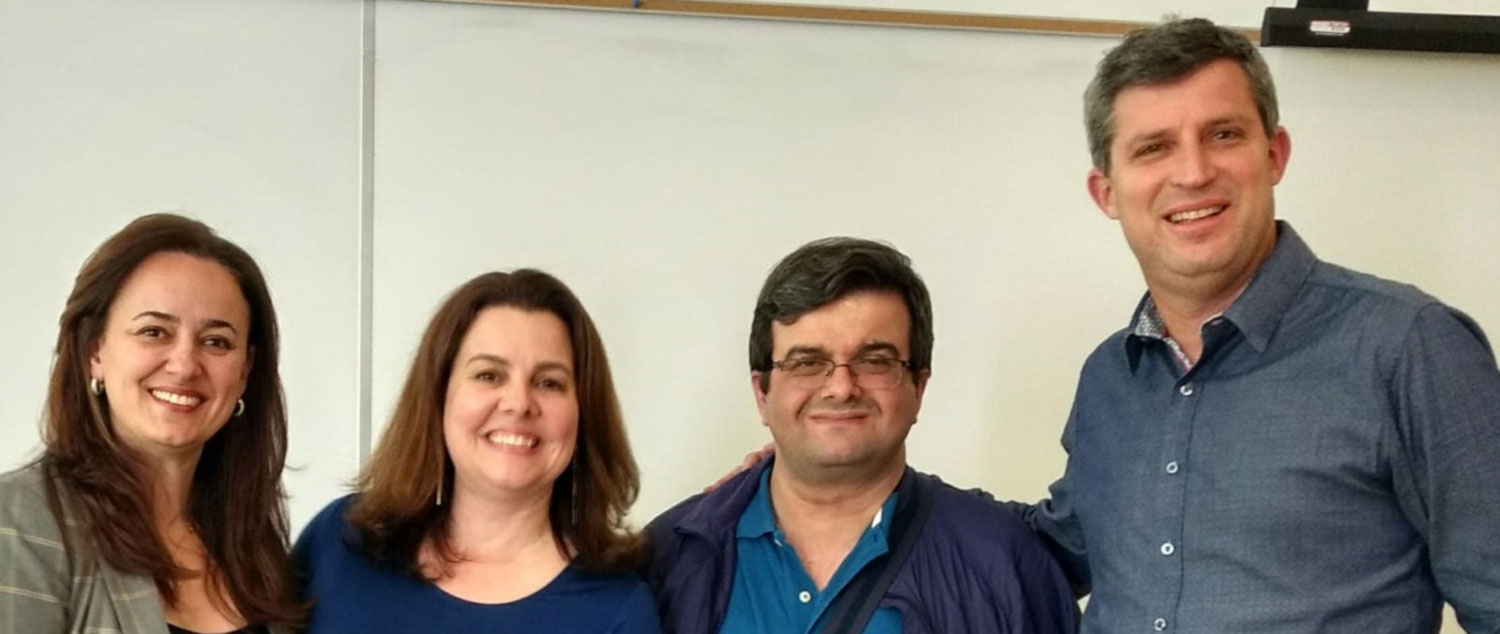Orthodontic appliances could improve treatment for obstructive sleep apnea
Jessalyn King - 31 July 2020

Gianoni-Capenakas on the left with supervisors Pachêco-Pereira, Lagravère-Vich and Flores-Mir
The study entitled Oropharyngeal 3D dimensional changes following maxillary expansion with two different orthodontic approaches examined the volume of the oropharynx after the upper jaw was expanded using two different apparatuses. These apparatuses produced maxillary expansion in the patients, and she scanned the patients using cone-beam computed tomography (CBCT) to determine the volume of the oropharynx before and after treatment. She found that one of the appliances did increase the volume a bit more than the other. She says, "It's most important to let clinicians know that some appliances could help their treatment of patients with this kind of malocclusion and breathing problem."
Gianoni-Capenakas is now following up with her PhD thesis project, involving pressure-drop experimental analysis measuring whether patients have a difference in breathing capacity (increased airflow, resistance, velocity, pressure, etc.) with different airway volume. She's currently working on pilot studies. Her expected hypothesis is that the bigger the volume, the bigger the airflow; however, she looks forward to finding out if increased airflow could come from different airway shape.
The number of studies in the dental sleep medicine field is increasing these days. Gianoni-Capenakas wanted to expand the research in this area since only a few other studies evaluate the oropharynx with high resolution, and their results differed. Part of her PhD study will be investigating why.
Gianoni-Capenakas chose the University of Alberta because the professors study and keep practical usage in mind. "They put in a lot of work and have a big impact on research worldwide without forgetting about the clinical world. Sometimes research gets too far from the endpoint. We still need to link the research to the patients. Here, I have the patients in front of me."
For Gianoni-Capenakas, being a researcher has been a dream since she graduated from her DDS in 1997. "I love to study; I love to find answers that are not there yet. Even though the pandemic halted the clinical research and the recruitment process, there's still so much work for the preliminary studies, like reviews and analyses."
Capenakas made sure to thank the faculty at the School of Dentistry, especially Drs. Camila Pacheco-Pereira, Manuel Lagravere-Vich, and Carlos Flores-Mir. "They are amazing researchers and professors and wonderful to work with. They've facilitated opportunities for me that I wouldn't have had without them. For example, I've had contact with engineers, and orthodontics groups in Spain, Italy, and BC because of their efforts."
Her thesis was successfully accepted into the American Journal of Orthodontics & Dentofacial Orthopedics for March 2021. She also has an umbrella review upcoming in the Journal of Dental Sleep Medicine called Rapid maxillary expansion effects on the upper airway dimensions and function in growing patients. It compiles information from other studies out there that focus on upper airway changes after maxillary expansion.